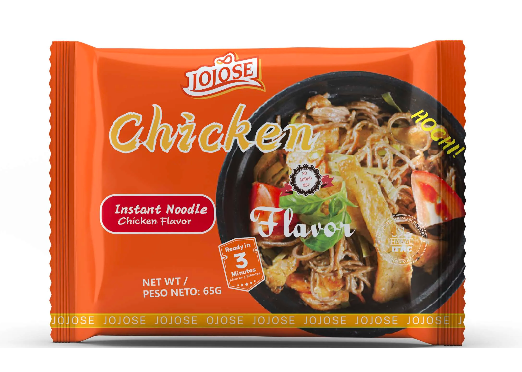As a college student, you are always in a rush. You have to juggle the balance between college life, part-time jobs, social life, and personal health. In such cases, having a healthy diet falls down the list, and students seek easy-to-cook options with minimal cooking time. One such alternative that comes as a relief to many young students is going for instant noodles. Instant noodles are affordable, tasty, easy to carry, and fulfilling. Also, with a few simple tweaks and additions, you can transform basic instant noodles into delicious, healthy instant noodles that offer both taste and nutrition. In this blog, JOJOSE FOODS, the top noodles manufacturer and supplier in China, explores various ways to make healthy instant noodles that are perfect for busy college students.
1. Choose the right type of noodles.
These days you can Buy Instant Noodles Online in the comfort of your home. There are plenty of varieties of instant noodles to choose from. For instance, in China alone, there are over 1200 varieties of noodles consumed today. As a college student, you might feel overwhelmed by the amount of choices, but it’s best to opt only for healthy instant noodles.
Some of the healthy instant noodles present in the market are:
- Whole-wheat noodles:
Whole wheat noodles are easy-to-find nutritious noodles that contain fiber to help slow down the absorption of sugar in the blood and maintain blood sugar levels after consuming them. Making healthy noodles is a good way to incorporate fiber into the diet. Fiber intake aids in the process of digestion, maintaining cholesterol, and weight loss.
- Chickpea pasta
Although they may be hard to find, the benefits chickpea pasta provides give you plenty of reasons to have them for lunch. For students who want to avoid gluten-based diets, chickpea pasta stands at the top of the list as it’s made from chickpeas grounded in flour. Some brands use only chickpea flour, while others mix them with ingredients like lentil flour, brown rice flour, tapioca starch, and pea protein.
- Veggie noodles
The best thing about noodles is that you can add loads of veggies to them. Cutting vegetables into ribbon to make it a colorful ribbon is an amazing way to add extra nutrients. Zucchini pasta is one of the best choices for a healthy addition, as it has 33% of the daily value of vitamin C in one cup, along with folate and B vitamins. Or you can try butternut squash noodles with vitamin A, and you can try palm noodles for vitamin C, B6, and potassium.
- Soba noodles
Soba noodles are made from buckwheat, which is a seed. It is gluten-free if you do not mix it with wheat to improve the texture. They are higher in fiber than white pasta. They came from Japan and are made from buckwheat flour, as they have a wonderful nutty flavor and slick, soft texture. Soba noodles provide immense benefits to physical health by proving to be a good source of magnesium, thiamin, protein, and soluble fiber, support cardiovascular health, control blood sugar levels, and are best for those who are allergic to gluten.
2. Add rainbow
The foremost factor that can make Instant Noodles Healthy for college students is adding the missing vitamins, nutrients, and antioxidants by adding colorful vegetables to plain noodles. Also, vegetables make an amazing companion to your favorite noodles. Adding a rainbow means having a vegetable representing each colour to add healthy perks to your noodle bowl. For instance, when you think of adding greens to your noodles, the best vegetables that go with them are spinach or kale. By adding green vegetables, you can add a range of phytochemicals that contain anti-cancer properties. Likewise, you can add red to the noodles by adding red cherry tomatoes or red capsicum to add powerful antioxidants to ensure your heart health.
Also, if you do not have fresh vegetables at hand, never shy away from using frozen vegetables that are quick to cook in a simmering broth. You can cook vegetables pre-hand in the pot, and after boiling the noodles, add colourful veggies to add life to them.
3. Check out healthy and quick recipes
As a college student, you are already juggling between so many activities that it is difficult to focus on making time-consuming, healthy dishes. In such a case, checking out healthy noodle recipes and trying them not only adds excitement to making noodles each day but also helps you with easier meal planning, keeping time, money, comfort, and food seasonings in mind.
This way, you can check out and try global flavours such as recipes from Thailand (Pad Thai), Italy (Pasta Primavera), or Japan (Yakisoba) to try something new and quick every time without getting bored of the same recipe.
4. Add lean protein
Lean protein is your best bet when it comes to making filling and tasty noodles. You can easily add various lean protein sources, such as tofu, pork, shrimp, egg whites, or edamame, to your noodles. You can cook the protein separately, such as lean protein, and then add it to the noodles or cook them together in the same pot for the required consistency.
Adding protein is the best way to get a more filling and satisfying instant noodle meal. They can help stabilise blood sugar levels and promote muscle growth and repair, making it beneficial for college students to include them in their healthy diet.
5. Add Textures
Most instant noodles already come with toppings and flavor sachets, so the other thing you need to pay attention to is adding textures. As noodles are already silky and smooth, add crunchy or crispy textures to complete instant noodles as a whole meal. Add braised pork belly or pork crackle, cashews, nuts, or honey-glazed raw julienned carrots. You can add a boiled egg and broth to your instant noodles to make a delicious ramen-inspired meal.
Conclusion
In conclusion, with a few simple adjustments and additions, instant noodles can be transformed into delicious and nutritious meals for busy college students. By choosing the right type of noodles, adding colorful vegetables, incorporating lean protein, experimenting with different recipes, and adding textures, students can enjoy healthy and satisfying meals without compromising on taste or convenience. Happy cooking!




